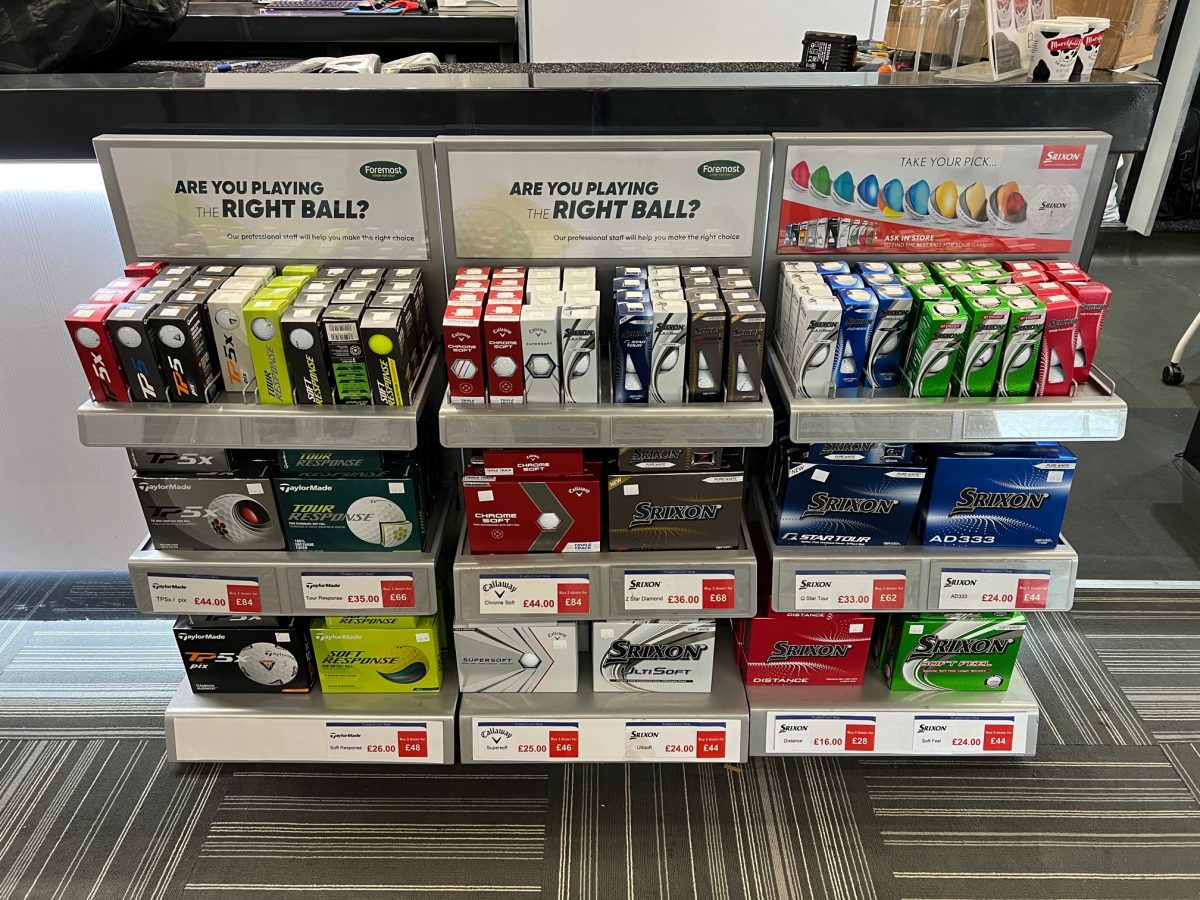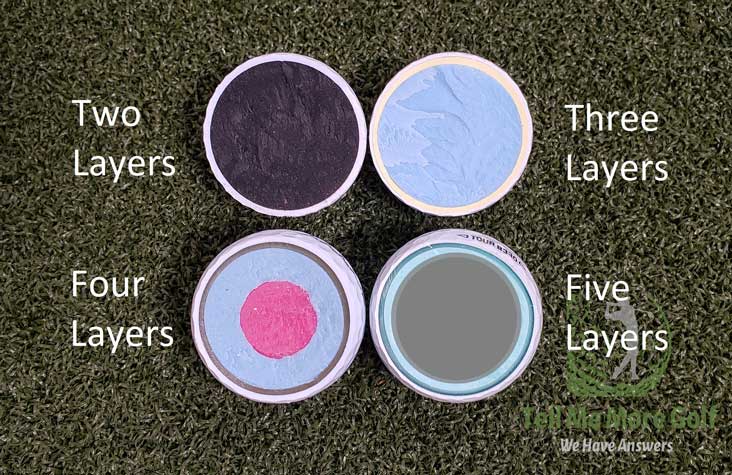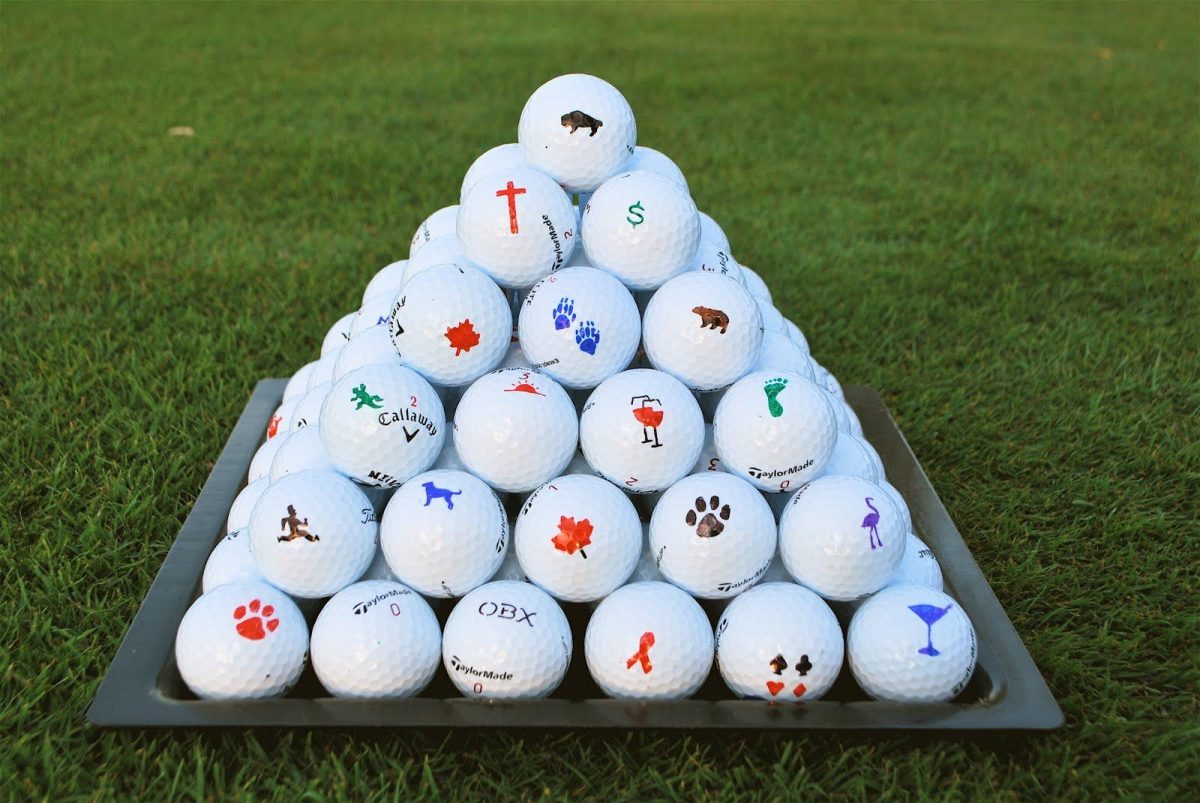Josh’s Tips & Tricks: Choose Your Ball
Intro
Hello golfers, welcome to this weeks tips & tricks. I’m starting to see more of you coming back onto the driving range after a wonderful summer of golf now the weather is changing. The hard work now begins ready for next season. One thing that you can experiment with through the winter months that can bring more consistency to your game is the type of ball you use. People always use that word “consistency” or the “lack of consistency” to explain their golf. If you use a different type of ball for every round how can you every expect some form of consistency?
We’re going to run through some different types of balls and how they could possibly impact on your game. We offer lots of different balls at lots of different price points so lets take a look at how they differ.

Types of Balls
The type of ball that you use can really change and improve your golf game. You need to decide what your looking for in your game. Some balls provide more distance off the tee, some feel softer with a putter or wedge, some launch higher with irons, some spin less with irons. Doing some research into balls and deciding on which parts of your game need to improve could really take your game to the next level.
Different construction
The construction of a golf ball is vitally important to the way it will react to contact with a club. Manufacturers are constantly pushing the limits of golf ball construction. Below are the most common constructions.
One-Piece Golf Balls
A one-piece golf ball is the most basic, and least expensive to produce. It is designed primarily for beginners, driving ranges and crazy-golf courses. It is seldom used as a playing ball.
Typically, one-piece balls are made from a solid piece of Surlyn with dimples moulded in. It is an inexpensive, soft and very durable golf ball, but does not give you the distance when hit because of its lower compression.
Two-Piece Golf Balls
A two-piece golf ball is used by most ordinary everyday golfers because it combines durability with maximum distance. The balls are made with a single solid core, usually a hard plastic, enclosed in the ball’s cover.
The solid core is typically a high-energy acrylate or resin and is covered by a tough, cut-proof blended cover that gives the two-piece ball more distance than any other ball. These ‘hard’ balls are covered in either Surlyn, a specialty plastic or a similar kind of material.
The firmer feel of the golf ball does produce more distance to a players game but will also not be as easily controlled as a softer ball. The two-piece is virtually indestructible and with its high roll distance, it is by far the most popular golf ball among ordinary golfers.
Three-Piece Golf Balls
Three-piece golf balls have either a solid rubber or liquid core, a layer of enhanced rubber or a liquid-produced layer and a moulded a cover of durable Surlyn, Urethane, or balata-like material.
They are softer and offer more spin, giving a better golfer more control over their ball flight. The more layers a manufacturer adds to a ball, the more spin-separation they can create. This means more customized performance for a driver compared to an iron or wedge. A three-piece ball is the first level of ball that will feature a noticeable spin-separation advantage.
Four-Piece Golf Balls
Each layer or piece in a four-piece ball has a specific and different purpose. All the layers work together to offer the longest hitting, softest feeling golf ball.
The inner core, the first layer, of the ball is the solid rubber centre that is primarily designed to offer explosive distance especially with a driver. The next, inner cover, layer is in the ball to transfer the energy from the strike to the hot core.
Next is the middle cover, which is the extra layer, compared to a three-piece ball. It offers the complete layer that tries to increase driver distance whilst also producing mid iron spin and feel around the green. The outer cover is where the feel of a golf ball comes from. Usually containing between 300-400 dimples, it is the thinnest layer. Made from Urethane it must be durable yet soft.
Five-Piece Golf Balls
The latest development in ball design is the five-piece ball. TaylorMade were the first to mass produce a five-piece ball when they released the Penta ball in 2009. Since then, several other major manufacturers have added a five-piece ball to their arsenal.
Much like a three or four-piece ball can use more materials and layers to offer more spin separation and performance benefits, the five-piece ball can do that even further. Whilst it will be the most expensive ball in the Pro Shop, the five-piece ball will offer the highest, Tour-level performance.
Typically a five-piece ball will feature three mantle layers, sandwiched between a high speed core and soft urethane cover. Each mantle layer will react to different shots and swing speeds in an effort to produce to the most optimised performance possible.

Spin
Low Spin Golf Balls
Lower spinning golf balls tend to decrease side spin of your shots, allowing the ball to fly straighter through the air. The ball may not travel as far in the air, but the lack of spin will result in increased roll upon landing. They are best-suited to players that slice the ball or struggle to find get distance on the ground.
Mid Spin Golf Balls
As the name suggests the mid spin golf ball bridges the gap between the low spinning golf ball and the high spinning balls. They try to incorporate the best of both distance and feel. Aimed towards the widest range of players and suitable to most players, the mid spinning ball will offer solid distance with varied feel and softness depending on brand. Almost all major golf ball manufacturers will produce a mid spinning golf ball that they believe is suitable to all players.
High Spin Golf Balls
Last is the high spinning golf ball. This ball is designed to increase the balls spin in the air. When a golf ball is hit, it is released into the air with a certain degree of backspin; a high spinning ball will increase this spin and create a longer carry. If you are a player that hits the ball right to left with a draw, a high spinning golf ball could be the one for you.
Out of control hook shots are produced by the drawspin overpowering the backspin on the ball; so increasing backspin will help straighten out a hook/draw. The high spinning golf ball will not get the run on the fairway that either a mid or low spinning ball can, however its greatest advantage is around the greens. A high spinning ball will increase feel around and on the greens, which will help players improve control.
Compression
Compression is a measure of the deflection a golf ball undergoes when it is struck. It is measured between 0 and 200, with 200 being a ball that does not compress and a 0 being a ball that deflects 5mm (1/5th of an inch) or more. Most golf balls range between 50 and 100 in compression.
A good way to understand compression is to consider a rubber band. Imagine wrapping a rubber band around three of your fingers. Now imagine wrapping it around the same 3 fingers, only this time as you wrap it stretch it so you can wrap it around three times. Obviously, you will feel a difference in the pressure on your fingers. That is compression. You are using the same amount of material and it is occupying the same amount of space, yet it is producing different pressures. That pressure is the result of compression and is exactly how compression works inside a golf ball.
Lower compression balls tend to be softer and compress more to create more distance. Higher compression balls offer more control and are used by better players who can produce faster swing speeds to compress the ball.
Mark Your Balls

When you have decided on the type of ball you want to play, don’t forget to mark it! Using a distinct marking on your golf ball with a permanent marker can stop confusion when finding your ball. If you play the wrong ball in a competition you get punished 2 shots! This should be plenty of motivation to mark and identify your golf balls. Your initials, a symbol, a distinct colour pattern all help you find your ball.
I have had numerous people tell me in recent weeks that they have played the wrong ball and it has cost them so make sure you don’t throw silly shots away through a lack of concentration. I personally really enjoy marking brand new golf balls. There is something very satisfying about putting your own stamp on a shiny new white ball.
Summary
Find a ball that works for you. It will take time and effort and maybe a few quid but it will be worth it. If you want more consistency in your game the first place to start is the ball you’re using. The only equipment you need to play golf are clubs and a ball. Your clubs maybe fitted but if your ball isn’t you’re never going to have consistent feel.
Mark your balls. Don’t be a plonker and cost yourself shots by playing the wrong ball. Make sure your markings are distinctive and easily visible. Use lines, circles, initials to identify yours against the rest. Don’t forget to also take note of the number ball you play. Most balls are numbered 1,2,3,4 but some come with high numbers. Identify your ball on the first tee as “Taylormade TP5x, number 3, blue dots by the number and a black line through the side”.
I will be offering ball fittings in the future but for now just speak to myself or the rest of the team for a ball recommendation.
If you would like to book a lesson BOOK HERE.
See you all soon.
Cheers,
Josh

